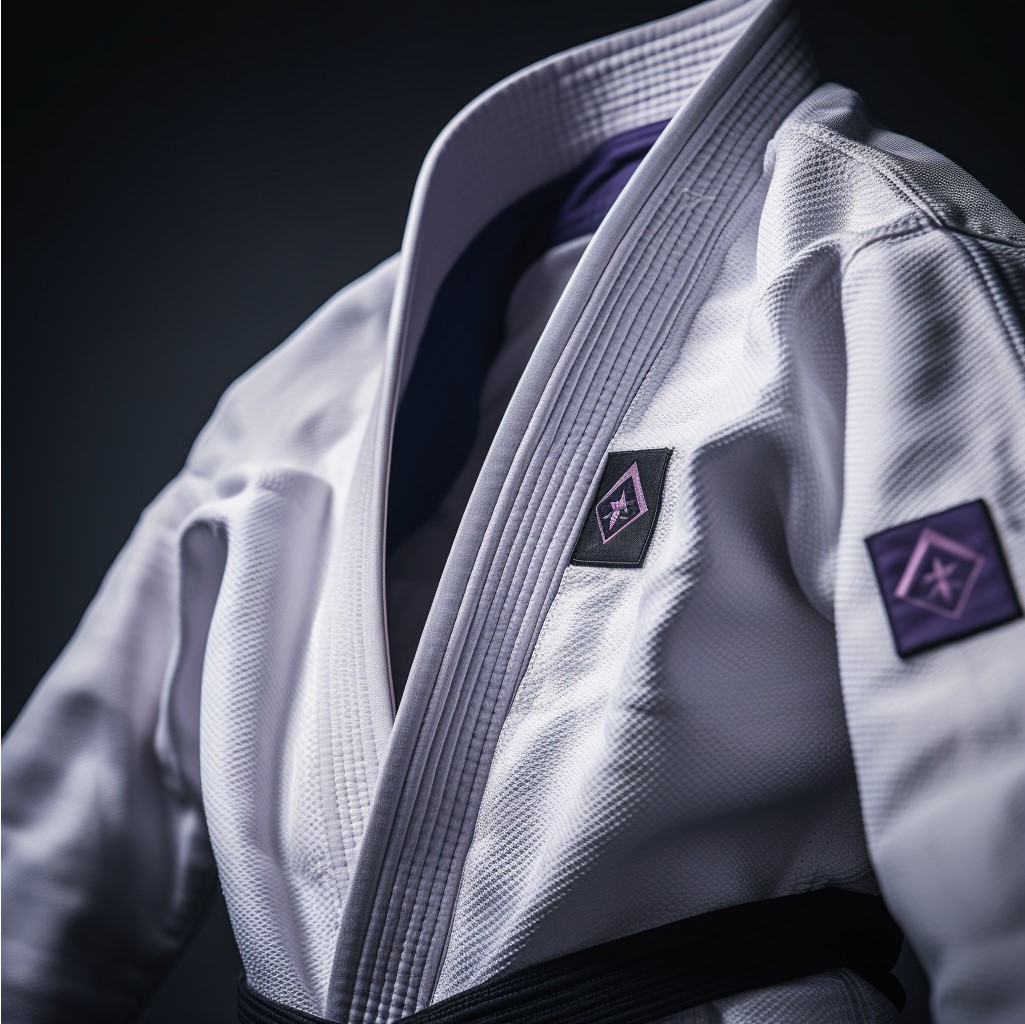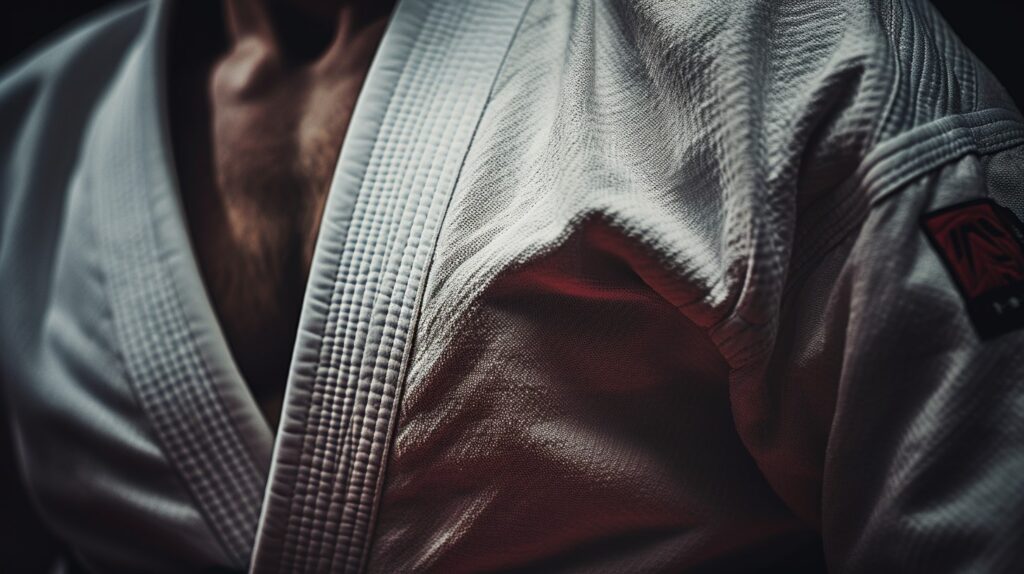
The world of Brazilian Jiu-Jitsu (BJJ) offers a variety of Gi styles, materials, and weaves, each with its own unique impact on size, fit, and overall performance. Practitioners engage in constant grappling , so the quality and specifications of the Gi can significantly influence the training experience. This article delves into how Gi materials and weaves impact size, fit, and overall comfort and performance during training sessions.
Understanding Gi Material and Weave
When choosing a gi, one of the most important factors to consider is the material and weave used in its construction. Gi material and weave have a direct impact on the size, fit, and performance of the garment. In this section, we will explore the different types of gi weave and their characteristics.
Different Types of Gi Weave
-
Single Weave: This is a basic and lightweight option, commonly used for beginners and those looking for an affordable gi. Single weave gis are constructed with a simple weave pattern and are generally made from 100% cotton. Their lightweight nature makes them easier to move in, but it can be less durable compared to heavier weaves.
-
Double Weave: As the name suggests, the double weave uses twice the material, resulting in a stronger and heavier gi. This premium gi offers more durability but may compromise flexibility and breathability. Due to their increased strength, double weave gis are often more expensive than single weave gis.
-
Pearl Weave: The pearl weave is a popular choice for modern BJJ practitioners, offering an excellent balance between strength, weight, and comfort. Its unique weave pattern makes it more breathable and lightweight than the double weave while still providing superior durability. Pearl weave gis are typically made from pre-shrunk material, resulting in minimal shrinkage after washing.
-
Gold Weave: This hybrid weave sits between single and double weave patterns, offering a combination of strength and reduced weight. However, gold weave gis have been known to experience excessive shrinkage, which may affect the overall fit and size.
-
Honeycomb Weave: This weave features a hexagonal pattern, providing an ideal combination of strength and breathability. The lightweight nature of the honeycomb weave makes it a suitable option for both training and competition.
-
Pearl Weave Plus: An enhanced version of the pearl weave, this gi offers additional strength and durability without the extra weight. It retains the same breathable and comfortable qualities as the original pearl weave, making it a popular choice for many practitioners.
Impact of weave on Size and Fit
The material and weave of a gi have a significant influence on its size and fit. Different types of fabric offer varying levels of durability, thickness, and comfort, which can affect how the gi fits on an individual’s body.
For instance, a heavier gi with a high GSM (grams per square meter) offers more durability but might feel rigid and restrictive in terms of fit. A high GSM indicates a thicker fabric, which can result in tighter sleeves, armpits, and pants. On the other hand, a lighter gi with a lower GSM will be more comfortable and have a less restrictive fit, providing better freedom of movement.
When considering body types, it is essential to make sure the gi fits properly to avoid discomfort or restricted movement during training. Each person’s body is unique, and Gi manufacturers often offer multiple sizes to accommodate various heights and weights. Selecting the appropriate size based on height and weight can help achieve a more accurate and comfortable fit in areas like sleeves, pants, and armpits. Check out our guide on reading BJJ Gi Size Charts for more information
Which Gi Weave is the most durable?

Understanding Durability
When it comes to selecting a gi for Brazilian Jiu-Jitsu, durability is a crucial factor. A durable gi can withstand the intense training and combat of BJJ without showing signs of wear or tearing. The durability of a gi is determined by the material used and its weave pattern.
There are several gi materials and weaves, with the most common being:
- Single Weave: It’s lightweight and affordable but tends to be less durable than other weaves.
- Double Weave: It offers more durability than the single weave, but it’s heavier, making it less comfortable to wear during training.
- Gold Weave: This hybrid weave combines the advantages of single and double weaves, providing strength without excessive weight. However, it may suffer from excessive shrinkage.
- Pearl Weave: One of the most popular weaves, the Pearl Weave resembles small pearls on the fabric surface. It is lightweight, strong, and comfortable to wear.
- Ripstop Gi: This type of gi features ripstop fabric, commonly used in pants and, in some cases, the gi jacket. Ripstop is known for its exceptional resistance to ripping and tearing, ensuring the gi’s longevity and durability. Ripstop material is also very light weight, which can give you the best of both worlds. Lightweight and very durable.
Sweat Absorption
Different gi materials possess varying levels of sweat absorption capabilities. For instance, cotton gis are known for their water retention. During long, protracted training sessions, a thick cotton gi can leave you feeling like a wet mop. Alternatively, synthetic materials often have moisture-wicking features that help draw sweat away from the body while still maintaining a lighter feel when compared to cotton.
As sweat accumulates in a gi, the material can become saturated, which can cause the fit to become more constricting and limit the wearer’s range of motion. Overly soaked gis can also become heavier, leading to challenges in executing certain techniques. Furthermore, it’s essential to consider the overall durability and cleanliness of a gi in relation to sweat absorption; as a gi absorbs sweat over time, the material can weaken, and bacteria may begin to accumulate, leading to unpleasant odors and potential skin infections.
Selecting a gi with optimal balance between sweat absorption, fit, and mobility is crucial for maximum comfort and performance during training sessions or competitions. It is essential for martial artists to understand their specific needs and preferences to make an informed decision when choosing the appropriate gi material and weave. Ultimately, an effective gi can enhance a wearer’s overall abilities and help them excel in their chosen discipline.
Conclusion
The type of material and weave used in a gi play a crucial role in determining its size, fit, and overall performance. Some of the common materials used in Brazilian Jiu Jitsu gis are cotton and various weaves such as Single Weave, Double Weave, Gold Weave, and Pearl Weave.
Personal preference can play a significant role in the selection of a gi. Some individuals prefer the lightweight feeling of a Single Weave, while others prioritize durability and may opt for the robust qualities of a Double Weave or Gold Weave. When considering a gi’s size and fit, it is essential to account for shrinkage as well, as some materials may shrink considerably after washing and drying, potentially affecting the fit and comfort.
In summary, the choice of gi material and weave has a significant impact on size, fit, and overall performance. Practitioners should consider their preferences and needs when deciding on the ideal gi for their training and competitions, taking into account factors such as weight, durability, and potential shrinkage.